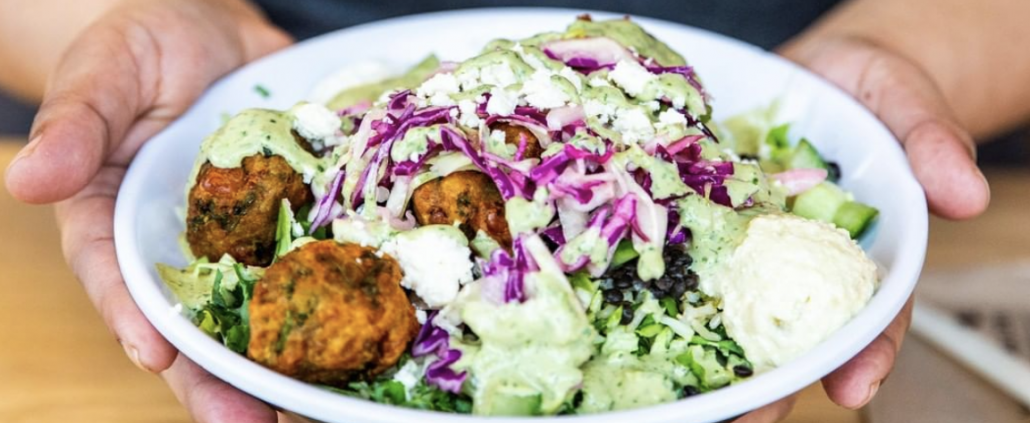UCLA Tackling Sustainability Goals Through Plant-Forward Menus
If you’ve lived or worked on the Hill, you’ve likely had a chance to experience the exceptional quality and variety that UCLA’s dining halls have to offer. You may have also heard that UCLA has the best dining halls in the nation; this statistic comes from two notable rankings, Niche’s “2018 Best College Food in America”, where UCLA’s dining halls have topped the ranking for two out of the past three years, and Best Value Schools’ “50 Best Colleges with the Best Food”.
The “Best College Food in America” ranking focuses mainly on student surveys and usually represents the quality and flavor of the food offered. To include other key factors, such as sustainability and inclusiveness to all dietary needs, Best Value Schools compiled information from Niche, The Princeton Review, College Rank, the Daily Meal, and Best Colleges. According to these compiled statistics, UCLA came in 3rd place overall for 2017-2018!
Efforts over the past decade that have contributed to this ranking include the De Neve Flex Bar (2017), the inception of Bruin Plate (2013), and the thoroughly successful tray-free initiative (2009). These efforts, among others, support sustainability, nutrition, and students of all dietary needs and choices. But more ambitious goals lie ahead. UCLA Housing & Hospitality Services aim to reduce menu items with animal proteins by 10% by Spring 2020, while adding exciting plant-based dishes.
This fall, Rendezvous West added delicious (and shockingly realistic!) ImpossibleTM ground beef as a protein option in Build-Your-Own Burritos and Burrito Bowls, and in the California ImpossibleTM Burrito.
FEAST at Rieber is increasing their plant-centric options through dishes flavored with Indian spices such as “Spice Dusted Cauliflower, Yams, Charred Corn, Spinach, Spiced Pumpkin Seeds, and Avocado Mint Sauce”, and “Rajasthani Yellow Lentils, Nigella Seeds, and Micro Cilantro”. Adding these dishes and many others is a part of a continual effort to provide more authentic Asian foods at FEAST.
Bruin Bowl, a new dining location inspired by CAVA, Sweetgreen, and Tender Greens, is scheduled to open by Winter 2020. Located inside De Neve Commons, it will not only be easily accessible to students in the dorms, but also to students that walk to and from the apartments via De Neve Plaza. And yes, methods of payment other than BruinCard swipes will be accepted!
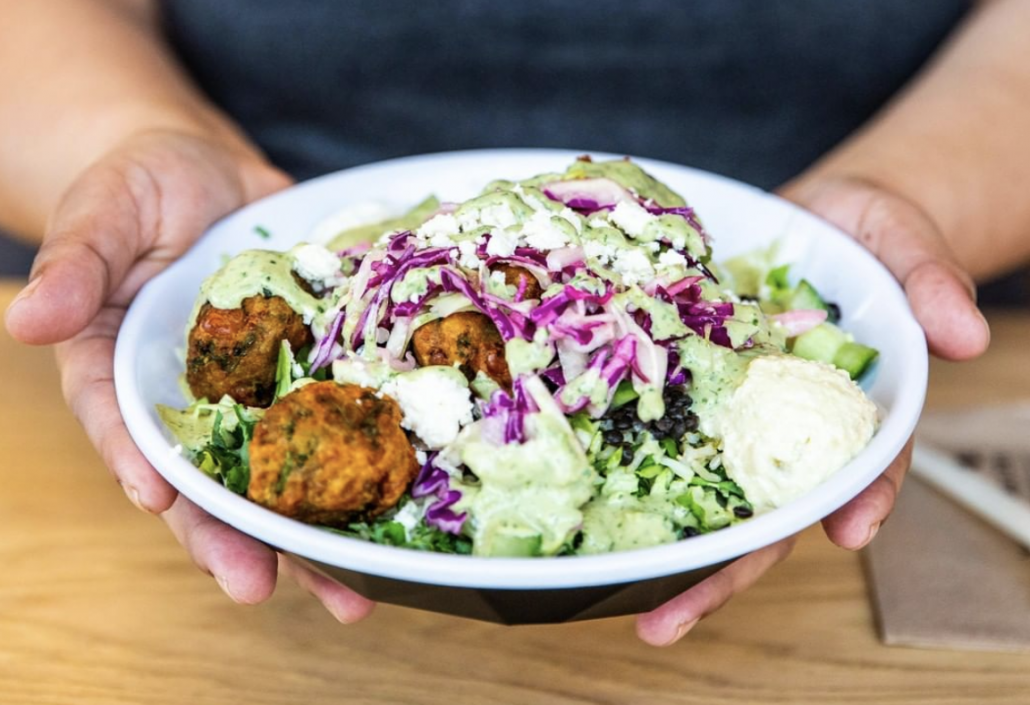
A delicious plant-based bowl from CAVA with falafel, hummus, and spicy lime tahini/green harissa (dairy free). Instagram: @cava
Sustainability and Nutrition, Hand in Hand
The link between sustainability and nutrition is complex, but one food sticks out like a sore thumb: beef.
In general, animal products have a much higher environmental impact than plant products. According to a study by Chatham House: The Royal Institute of International Affairs, greenhouse gas emissions from the livestock sector represent 14.5% of all greenhouse gas emissions and even exceed emissions from the transport sector. In this study, the ‘livestock sector’ is defined as the feed production, livestock production, slaughter, processing, and retail associated with all land-based-animals raised as food sources (including dairy and eggs).
Similarly, a report published by the United Nations Food and Agriculture Organization even sets the number as high as 18%. But beef is the most resource-intensive of all animal products by far. The three diagrams below help to visualize the environmental impact of beef compared to other proteins.
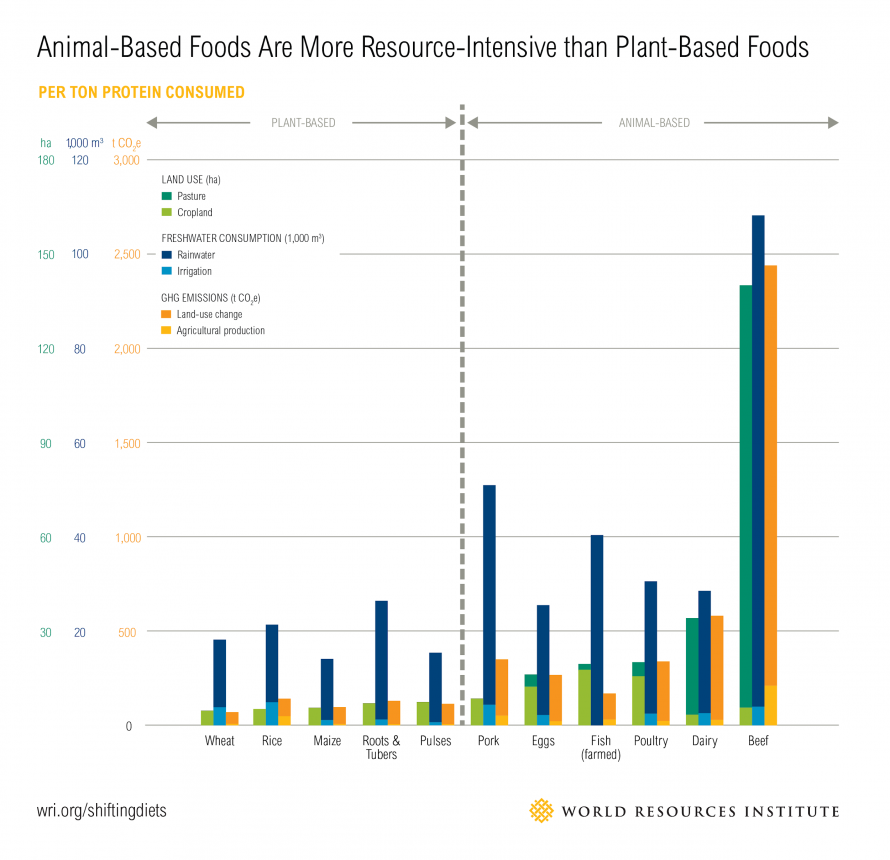
A comprehensive overview of the resources required to produce various proteins by the World Resources Institute.
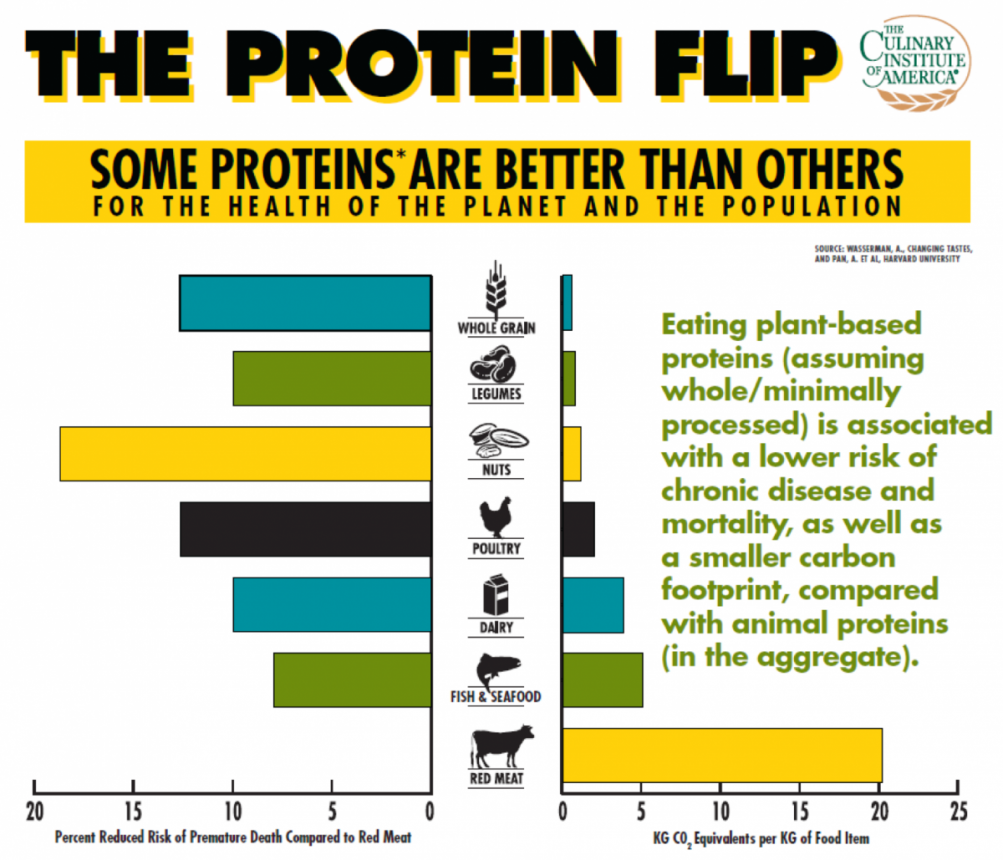
The link between sustainability and nutrition is shown in this graphic by The Culinary Institute of America.
In a previous blog post, Jennifer Jay, Professor of Civil and Environmental Engineering, collaborated with the EatWell pod to create the infographic shown below. While beef and veggie burritos are comparable nutritionally, the carbon footprint of the beef burrito is 10x greater.
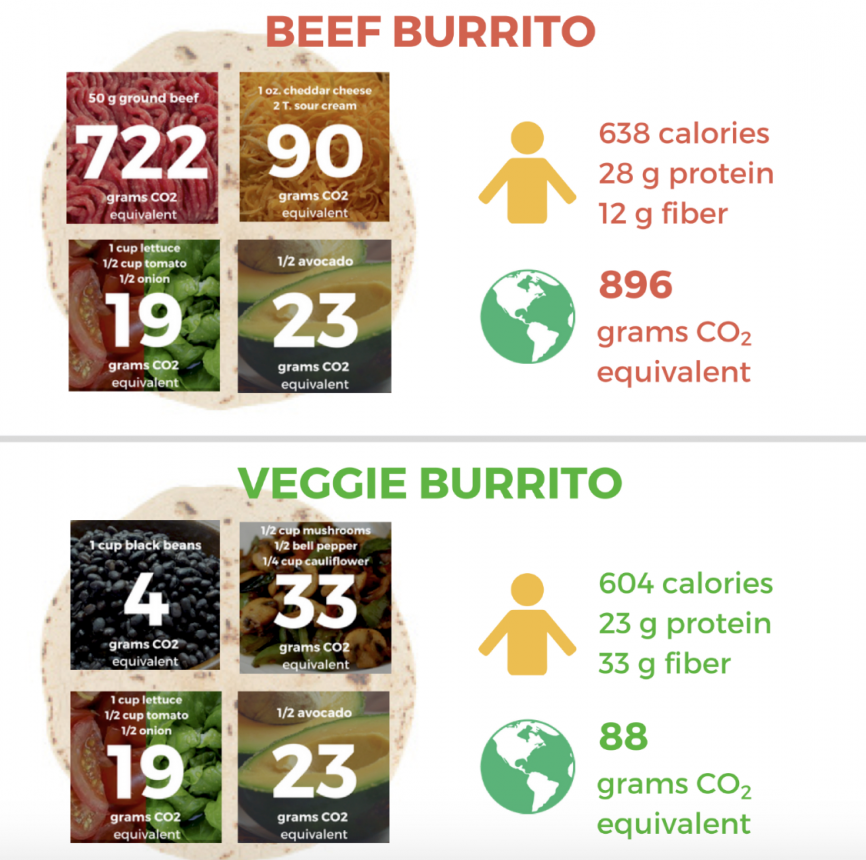

In the same article, Professor Jay writes,
“In addition to driving less and using less electricity, the FASTEST, EASIEST, AND BEST way to reduce our carbon footprint is to eat a plant-based diet. We do NOT need meat in our diet, and in fact, there is evidence to suggest that meat-heavy diets increase the risk of and exacerbate already-present chronic diseases, and are pro-inflammatory.”
You can find the whole infographic and more information from Professor Jay in the EatWell blog post here.
Ethics and Diet
If asked, most people would say they are opposed to animal cruelty. But 94% of us contribute to the suffering of billions of animals, perhaps unknowingly, by eating animal products. This article clearly outlines the processes of transport, immobilization, and slaughter, and explains which parts of the process cause the animal to experience stress, fear, or pain.
And it’s not only the animals that suffer; slaughterhouse workers are increasingly being treated for PTSD and severe anxiety, and the psychologically taxing work is associated with increased domestic violence, social withdrawal, drug and alcohol abuse, and higher crime rates.
As one former slaughterhouse worker attests in the book Slaughterhouse: The Shocking Story of Greed, Neglect, and Inhumane Treatment Inside the U.S. Meat Industry:
“The worst thing, worse than the physical danger, is the emotional toll. If you work in the stick pit [where hogs are killed] for any period of time—that let’s [sic] you kill things but doesn’t let you care. You may look a hog in the eye that’s walking around in the blood pit with you and think, ‘God, that really isn’t a bad looking animal.’ You may want to pet it. Pigs down on the kill floor have come up to nuzzle me like a puppy. Two minutes later I had to kill them. … I can’t care.”
99% of farm animals in the US are raised on factory farms and numerous undercover investigations have revealed inhumane practices within the factory farming industry. More than 50 billion land animals are slaughtered yearly, and many more die on their way to the slaughterhouse due to heat stroke and diseases that run rampant in the impossibly close quarters that the animals occupy. In fact, 70-80% of all antibiotics are used for livestock for this very reason, which contributes to world antibiotic resistance.
Eating more plant-based foods and fewer animal products means changing lives: not only the lives of animals, but also the lives of the employees hired to kill them. Since supply follows demand, personal actions can genuinely make an impact when it comes to vouching for animal rights.
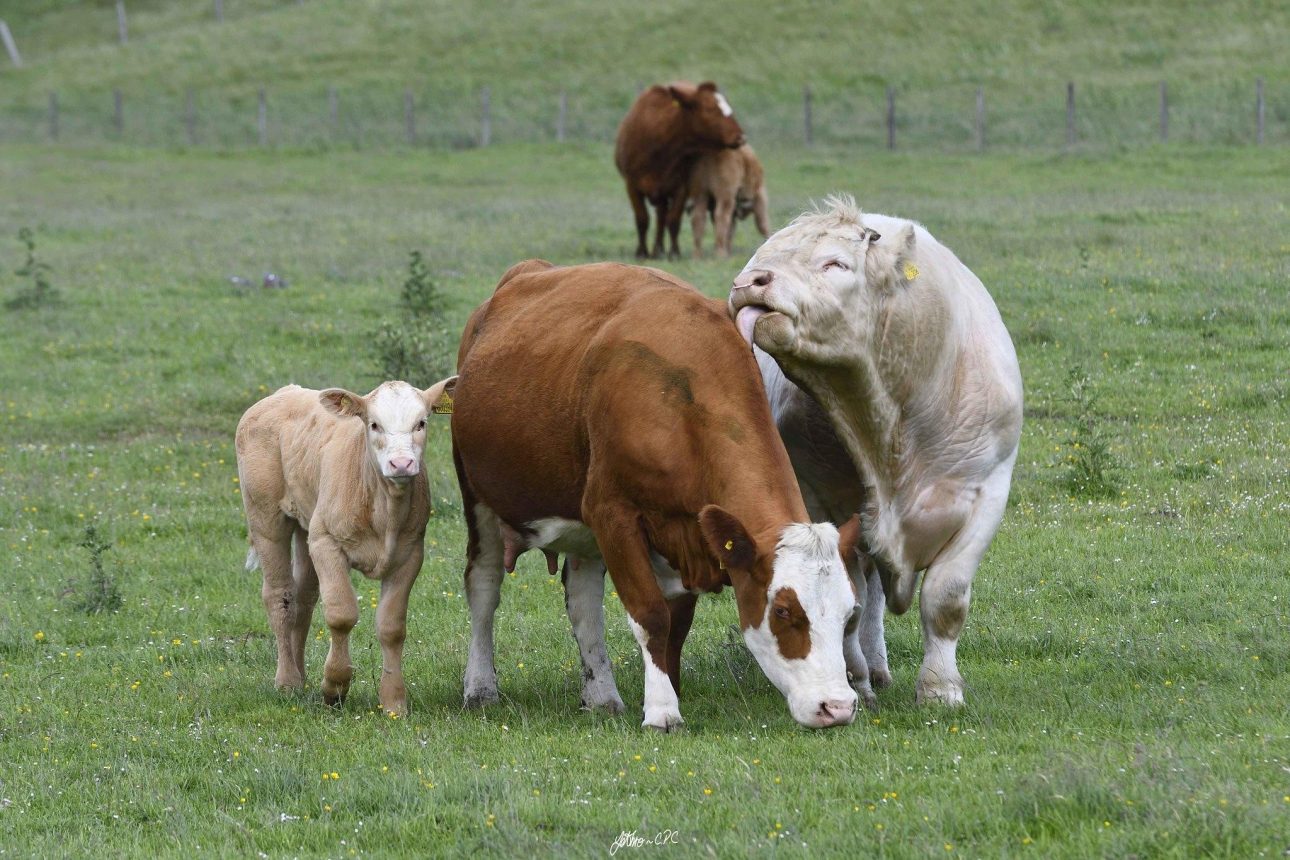
Some of the few very lucky cows that spend their lives outside, rather than in concentrated animal feeding operations (CAFO). Image from flickr.com
Plant-Based Eating to Support your Nutrition Goals
To learn more about the nutritional benefits of eating more plant-based foods, I spoke with Erica Lee, MPH RD, who summed it up as follows:
“By eating more plant-based foods, you are more likely to consume the nutrients typically lacking in the American diet, especially fiber. Additionally, your risk for chronic diseases, such as heart disease, tends to decrease. But keep in mind, plant-based does not automatically mean healthy.”
For example, chips and soda are technically completely plant-based, but definitely not the best when it comes to health.
But what about eating a fully plant-based diet (ie. no animal products at all)? The position of the Academy of Nutrition and Dietetics is that “appropriately planned vegetarian, including vegan, diets are healthful, nutritionally adequate, and may provide health benefits for the prevention and treatment of certain diseases. These diets are appropriate for all stages of the life cycle, including pregnancy, lactation, infancy, childhood, adolescence, older adulthood, and for athletes.”
Common worries about eating fully plant-based include not being able to get enough protein, iron, or calcium, difficulty reaching satiety, and high cost.
To ease these worries, Lee suggests identifying foods that contain high levels of protein (keep in mind that vegan bodybuilders get enough protein to build their impressive physiques without any animal products involved), iron, vitamin B12, and calcium, then choosing less processed foods such as beans and rice that happen to be much cheaper than animal products, focusing on flavor, and trying new recipes with these low-cost ingredients.
For those looking to transition to a fully plant-based diet, Lee recommends first checking out MyPlate or the Harvard Healthy Eating Plate (pictured below) and ensuring that your meals look similar. Next, focus on adding plant-based proteins and making replacements where possible, rather than only removing the foods that you no longer want to include. She also encourages looking for recipes of plant-based versions of the foods you already enjoy, eating as colorfully as possible, being kind to yourself throughout the process, and having fun with it! After all, your diet is constantly evolving and belongs to no one but yourself.
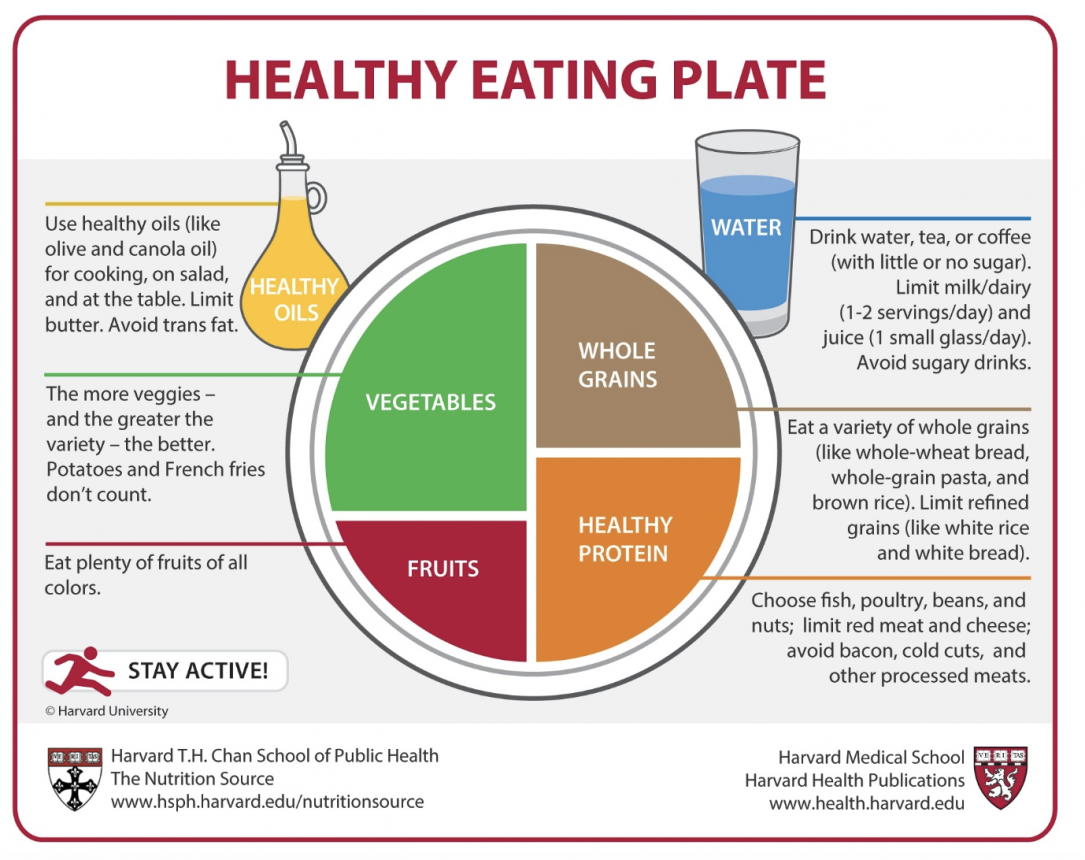
With some background on the benefits of choosing plant-based foods, it’s no surprise that UCLA strives to provide a variety of delicious plant-based options to keep our campus eating well. Dining on the Hill is constantly evolving, and your comments and suggestions are always welcome!
Patience Olsen is an undergraduate student at UCLA majoring in Civil and Environmental Engineering. In addition to blogging for the EatWell pod, she is a PD for the ASCE Environmental Design project, the Events Coordinator/Publicity Director for AWWA, and a member of the Club Sports Climbing Team.

